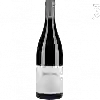
Winery Reine PédauqueLes Vignaults Bourgogne
This wine generally goes well with poultry, beef or veal.
Food and wine pairings with Les Vignaults Bourgogne
Pairings that work perfectly with Les Vignaults Bourgogne
Original food and wine pairings with Les Vignaults Bourgogne
The Les Vignaults Bourgogne of Winery Reine Pédauque matches generally quite well with dishes of beef, veal or game (deer, venison) such as recipes of veal shank with mushrooms, veal shoulder with cream and tarragon or saddle of venison with fresh cream.
Details and technical informations about Winery Reine Pédauque's Les Vignaults Bourgogne.
Discover the grape variety: Salagnin
Discovered in the 1870s by Mr. Robin, who lived in the Drôme at the time in Lapeyrouse-Mornay, this ancient grape variety is believed to have originated in the north of Isère. It can also be found in Switzerland. According to Thierry Lacombe (I.N.R.A./Montpellier), it is the result of a natural intraspecific crossing between Tressot Noir and Mondeuse Blanche. It should be noted in passing that, on the one hand, it has exactly the same parents as the mondeuse noire, that on the other hand, it is the mother of the diolinoir and, finally, is related to the servanin. Robin noir is not widely propagated today because it is not well known, although it is listed in the Official Catalogue of Wine Grape Varieties, list A1.
Informations about the Winery Reine Pédauque
The Winery Reine Pédauque is one of wineries to follow in Bourgogne.. It offers 212 wines for sale in the of Burgundy to come and discover on site or to buy online.
The wine region of Burgundy
Bourgogne is the catch-all regional appellation title of the Burgundy wine region in eastern France ("Bourgogne" is the French name for Burgundy). Burgundy has a Complex and comprehensive appellation system; counting Premier Cru and Grand Cru titles, the region has over 700 appellation titles for its wines. Thus, Burgundy wines often come from one Vineyard (or several separate vineyards) without an appellation title specific to the region, Village or even vineyard. A standard Burgundy wine may be made from grapes grown in one or more of Burgundy's 300 communes.
The word of the wine: Roundup
Woody part of the grape bunch to which the berries are attached.














